Bayonetta 2 is a Perfect Sequel, In My Objectively Correct Opinion
June 7, 2023
After writing my Puss in Boots: The Last Wish review, my brain shifted into complete Bayonetta brainrot mode. One of the big reasons being that the series’ next entry, a prequel titled Bayonetta Origins: Cereza and the Lost Demon, was inching closer and closer to release. It’s a great, surprisingly lengthy adventure game with a gorgeous artstyle, but it’s not the subject of this article.
Let’s rewind a bit.
Ever since playing the original Bayonetta, developed by Platinum Games and published by Sega in 2009, I’ve been a fan.
With a varied arsenal of insane weapons at her disposal, paired with her classy, confident demeanor, Bayonetta’s a charming protagonist, and watching her humiliate the literally holier-than-thou enemies she battles is endlessly entertaining.
Bayonetta’s third entry, Bayonetta 3, was released in October 2022, and I am very conflicted about it.
The gameplay is show-stopping, as usual; the dance-like Witch Time-centric combat is an utter joy, heightened by the new Demon Slave system. Being able to chuck a train, a train that also has chainsaws mind you, at your enemies, while simultaneously twirling around on razorblade yo-yo’s is just the best thing.
In line with series tradition, the music is also amazing: Moonlight Serenade, Whispers of Destiny, Red Moon, Gh( )st, Night Shadows Dancing, Singularity Definition, Fertile Rondo–I could go on for ages about how many spectacular songs Bayonetta 3 is brimming with.
The levels are filled with the climactic, crazy moments that the series is known for, like sliding down buildings on a giant lizard, an opera battle with some evil mosquitos that has genuinely the best gameplay-music integration I’ve ever seen, among many, MANY others.
And, and, and, and, and, and, and, and, and, and, and! It has Viola 😀

I love her.
Viola is an inexperienced witch who tries to come off as cool and edgy, but she’s really just a li’l goofball. Her personality plays fantastically off Bayonetta’s effortless confidence, and she’s an endearing, welcome addition to the cast.
She’s also a second playable character!
Bayonetta, as a series, isn’t a stranger to non-Bayonetta playable characters. In the first game, there was Jeanne, Bayonetta’s rival-turned-best friend/homosexual lover, and the living(?) Halloween decoration . . . thing King Zero.
They both function identically to Bayonetta, with the sole differences being that Jeanne’s Witch Time activation window is much stricter, and Zero only has 1 hp. Like, he’ll die if he so much as gets poked. For players who really want to challenge themselves, they’re nice alternatives.
Also, all of the cutscenes were made with Bayonetta/Jeanne in mind, so when you’re playing as Zero, whose model is rigged entirely differently than the witches, the cutscenes look exceptionally wrong and it’s hilarious.
In Bayonetta 2, Jeanne returns as a second playable character, but Zero has been swapped out for Rosa. Rosa is Bayonetta’s mother, and she functions like her daughter, but her attacks are substantially slower to balance out the raw, unadulterated DAMAGE she can inflict.
There are also two more playable characters added to the roster: the Masked Lumen Sage and the series-staple barkeeper demon Rodin. You can’t use either of them during regular missions, though; they’re restricted to the co-op enemy gauntlet mode Tag Climax.
All of these characters, even with their own little gimmicks, have one fundamental similarity. Bayonetta, Jeanne, Zero, Rosa, the Masked Lumen, and Rodin all activate Witch Time (or some sort of alternative) by dodging enemy attacks at the right moment.
Viola is different. Instead, she activates Witch Time by parrying an enemy’s attack.
This seemingly insignificant addition changes how she plays completely. Paired with her way of using Demon Slave, shucking her sword, it reflects her inexperience and makes Viola not only a fun contrast to Bayonetta in her personality, but in her gameplay as well.
Also, her battle theme? SUPERB.
Bayonetta 3’s rival character, a universe-traversing fursona named Strider, is always fun to fight. Like Viola, his theme music assaults you with how good it is, and I adore his stained glass-y design.

I don’t really care for what the story does with him, but in a vacuum, he’s great.
And even the multiverse concept I was on board with.
While multiverse stories have become increasingly uninteresting and repetitive, save for Into/Across the Spider-verse, Everything Everywhere All at Once and like Tales of Xillia 2 kinda, Bayonetta has potential to make it work. It’s always been a series about the power of a person’s faith in their own identity, and multiverse stories, where characters can see the myriad potential paths that their lives could’ve taken had they made different choices, are great for challenging that kind of self-confidence.
The series also already has time travel, so like, screw it! Go backwards, forwards, AND sideways!
On the less positive side, Bayonetta 3 feels very disconnected from both of the series’ previous entries and even Origins, now that I’ve played it. The angels are hardly relevant, being violently pushed to the side in favor of the Homunculi, and the non-Demon Slave demons get the same treatment, save for a minor moment in the Egypt universe. The Lumen Sages get it even worse, only being mentioned off-hand at the very beginning of the game.
However, I was willing to give it a pass. If every single Bayonetta game revolved around a dispute over the Eyes of the World, the angels, demons, Lumen Sages, and Umbra Witches, it’d get tiring and repetitive. And, hey! The gameplay is polished to perfection and better than ever with Demon Slave; it has Viola to remind you that Viola is a thing and I love her; the entertainment value is cranked up to eleven; and I don’t hate the multiverse idea.
But there is quite a big problem with Bayonetta 3: the game’s ending.
Oh THE ENDING
I am not kidding when I say that Bayonetta 3’s ending genuinely cancels out a lot of the good the game had going for it. It’s on the same level as the endings of Game of Thrones and Star vs. The Forces of Evil. The exact same feeling of disrespect and complete rejection of what the series had established, not only just in Bayonetta 3 itself, but in the previous and following entries as well!
As Youtuber SuperButterBuns put it in her video My Bayonetta 3 Experience, “It’s like you have this beautiful, handcrafted pie, made with love and care and it’s just packed with flavor, and then someone takes a big fat [POOP], sticks it right in the middle, and they say EAT UP!”
Which . . . yeah. She hits the nail right on the head.
This ending makes Bayonetta 3 single-handedly such a conflicting, bitter experience that I just can’t love it as much as I want to.
I lay all of this out, so I can emphasize: Bayonetta 3 is not a great sequel. It’s a great game, don’t get me wrong, I would still highly recommend it on the merits of its phenomenal gameplay alone, but it’s not a great sequel.
Which is a massive pill to swallow, coming from Bayonetta 2, which absolutely IS a perfect sequel to the original game.
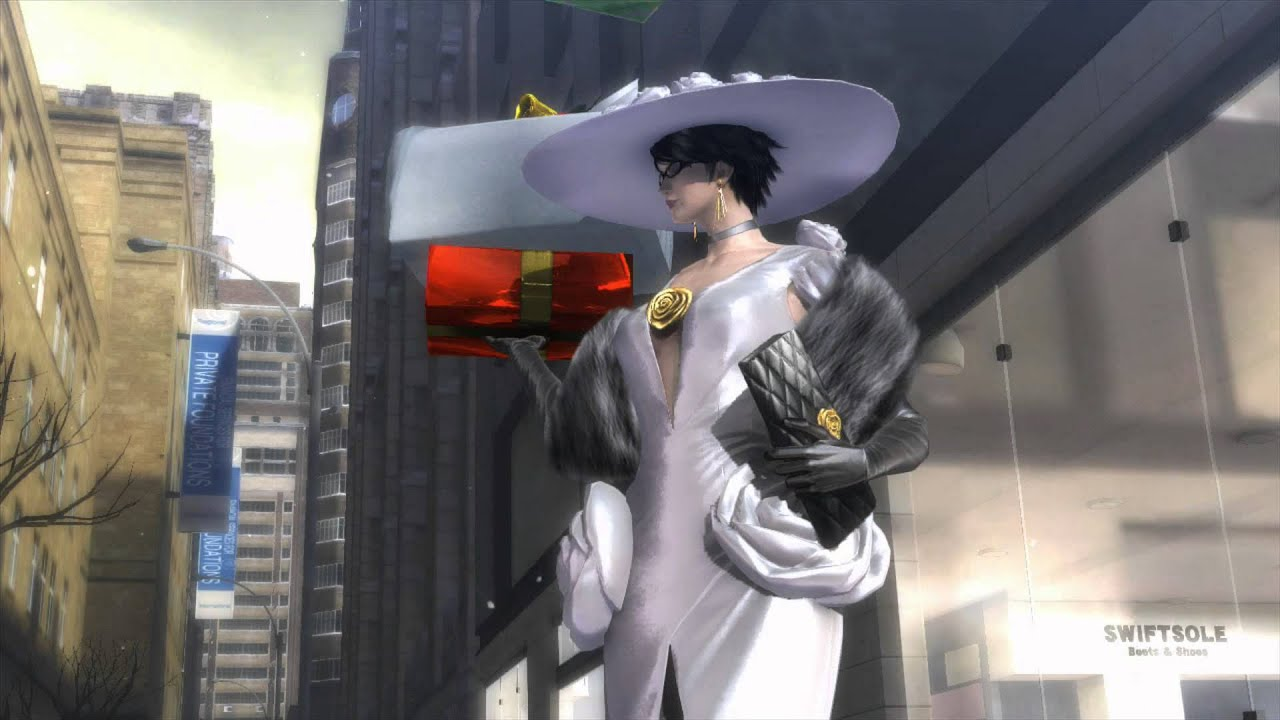
Bayonetta 2 follows, you guessed it, the human skyscraper and bisexual icon herself: Bayonetta.
After the events of the last game, she’s just chilling, getting some holiday shopping done in New York. With her is an associate of her’s, an informant named Enzo, who is unfortunately not voiced by Danny DeVito.
I thought he was in the last game. He’s not D:
But, as always, a group of angels shows up and they try to interrupt the holiday festivities.
And, as always as always, Bayonetta tears them to shreds easily and has a great time doing it, with a bit of help from Jeanne. This battle takes her across New York, flying between buildings on a plane, across the Brooklyn Bridge, and even circling around the Empire State building.
To finish off the angels, Bayonetta summons the demon Gomorrah. It’s one of her go-to demons; surely everything’ll be fine.
It isn’t.
But to explain why, I need to go over some lore.
The world that the Bayonetta series exists in is called the Trinity of Realities, and it’s made up of three, technically four, parts:
-Paradiso, the domain of the angels
-Inferno, the domain of the demons
-The World of Chaos, the domain of humanity
and
-Purgatorio, the invisible sub-world that overlaps, but is ultimately separate from, the World of Chaos. Supernatural beings like the angels and Bayonetta are able to access Purgatorio, and they use it to fight each other without disturbing the public.
This trinity, or quad-rinity if you want to get technical, is kept stable by two trinkets called the Eyes of the World. These were entrusted to two groups: the Umbra Witches and the Lumen Sages. The Umbra had the Left Eye, also referred to as the Left Eye “of Darkness,” and the Lumen Sages had the Right Eye, similarly also referred to as the Right Eye “of Light.”
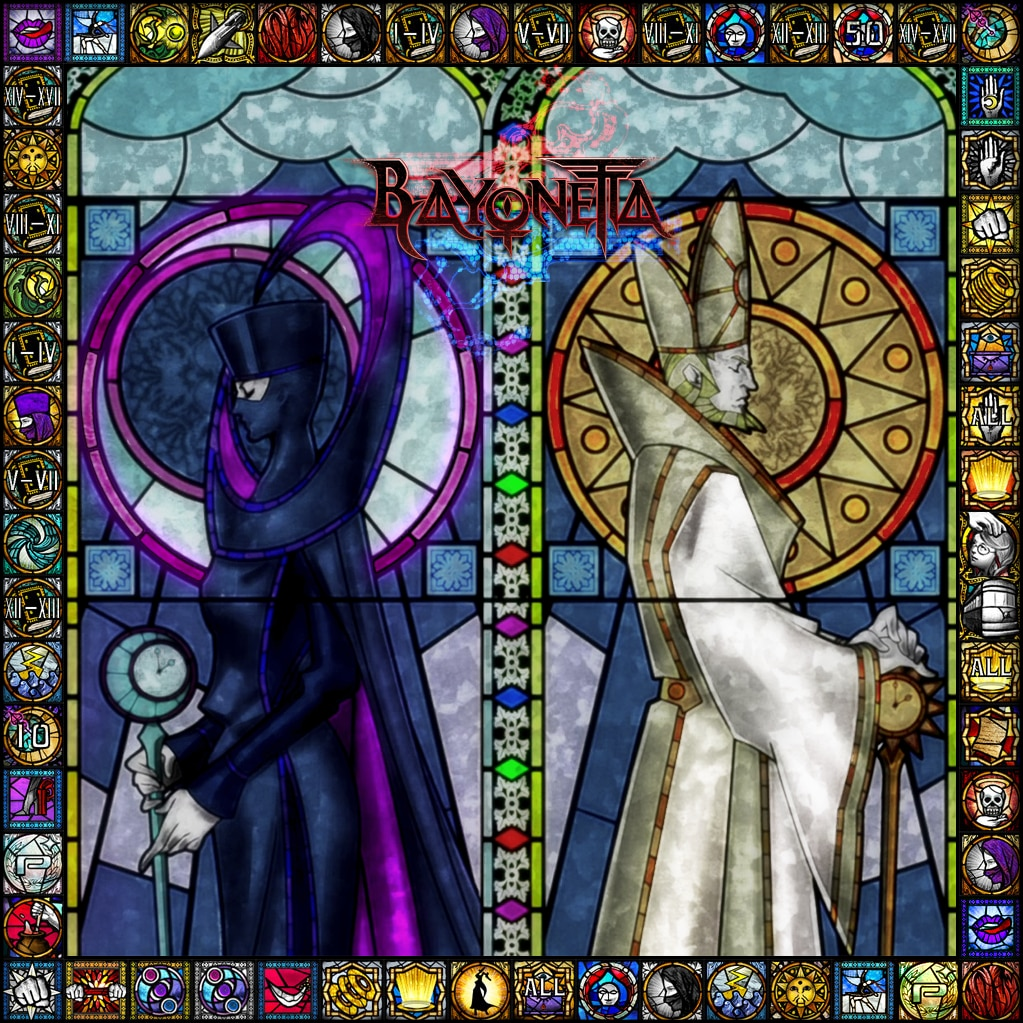
These groups existed in a sort of mutual respect and/or fear of each other, working together when necessary, but they generally kept to themselves. The Witches’ ability to contract demons from Inferno scared the Sages, and likewise, the Sages’ ability to call upon angels intimidated the Witches.
Well, I mean, they DID generally keep to themselves until a certain witch-and-sage duo decided to do the ol’ ring around the rosie but ehh that’s spoiler stuff–
In the modern day, both of these groups are almost entirely extinct. Bayonetta and Jeanne are the only remaining Umbra Witches, and as far as we know, no new Lumen Sages have popped up.
And in the modern day, specifically at the climax of the previous game, Bayonetta ended up destroying the Right Eye of Light, as well as the last surviving Lumen Sage who’d had it.
Now that only the Left Eye exists, the universe’s balance has become rickety, and the angels and demons alike are pretty upset.
Gomorrah is no exception, and it tries to murder Bayonetta while she’s distracted.
Thankfully, Jeanne swoops in to take the blow for our heroine but dies in the process. Her soul is quite literally ripped from her body, and the evil grabby hands from Inferno show up to drag her down.
In one of her few genuine moments of panic, Bayonetta dashes to grab Jeanne’s soul. However, she’s just too far away to reach her in time, and Jeanne disappears.
After spitefully kicking Gomorrah’s massive teeth in, Bayonetta goes to the Gates of Hell, the series’ item shop, to talk with the proprietor: the infinitely powerful, yet laid-back demon Rodin.
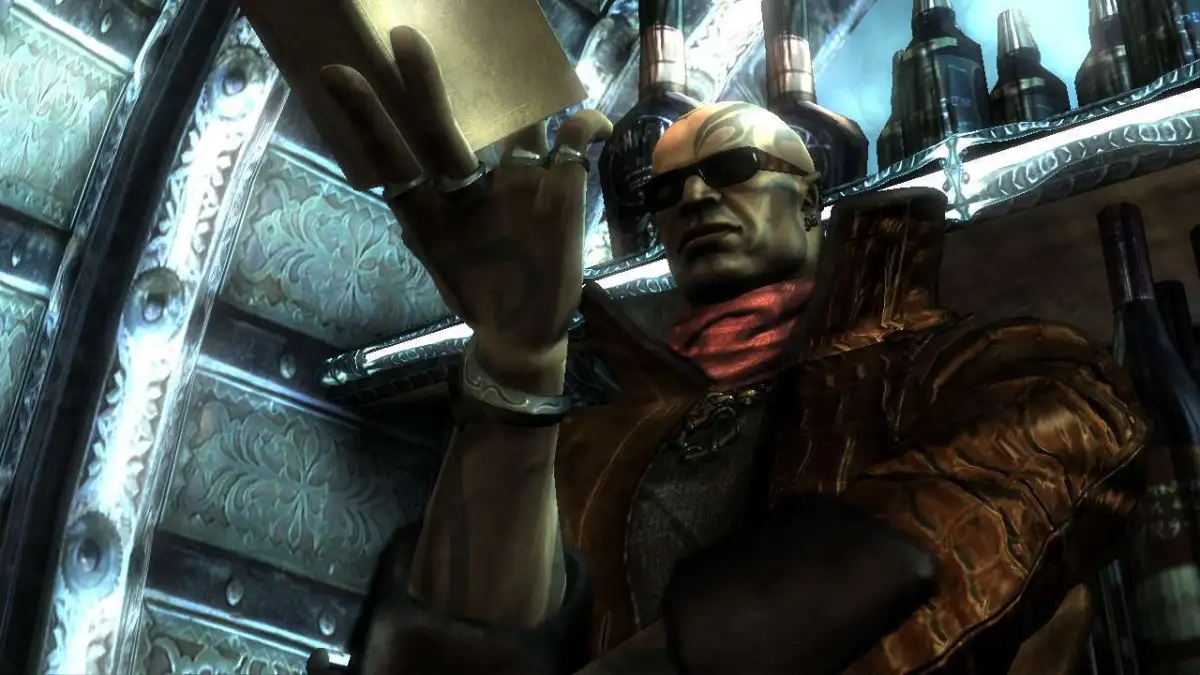
Rodin basically says that . . . there’s nothing they can do. This is just how their world works; when Umbra Witches like Jeanne die, they’re sent to the nightmarish hell-plains of Inferno to suffer in agony for the rest of time.
This is how the world of Bayonetta has always worked, and Jeanne isn’t exempt from the rules that she and Bayonetta’s ancestors had been shackled to.
Bayonetta isn’t having it though, and she continually wracks her brain for solutions.
She quickly gets one: the Gates of Hell. Not Rodin’s establishment, no–the actual gates that connect the World of Chaos to Inferno. If she can get there and find Jeanne’s soul before she’s completely absorbed into it, there might be a chance to save her.
Rodin thinks the plan is stupid, but, nonetheless, he gives Bayonetta an Umbra Witch’s heart. This’ll serve both as a tool to save Jeanne’s soul once she finds it, and as a magic egg timer counting down until Jeanne’s fully cooked.
Rodin also agrees to keep Jeanne’s empty body preserved until that deadline, which he estimates is around 24 hours. Not long.
With that, Bayonetta sets out, heading towards Noatun by plane. Subtitled the City of Genesis, Noatun is a religious coastal town at the foot of a holy mountain named Fimbulventr, which, according to Enzo, is where the real Gates of Hell reside.
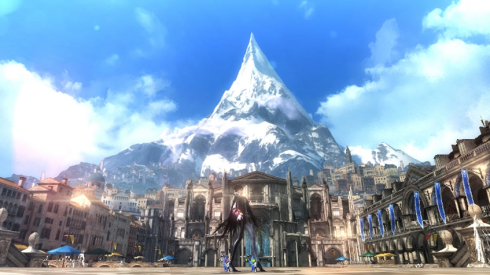
Enzo explains that his information isn’t the most reputable, as Fimbulventr is infamous for being impenetrable. By foot, by plane, any method–travelers commonly meet a grisly end on the trek up the holy mountain, no matter what angle they approach it from.
Fimbulventr’s basically Mount Everest but worse, and because of that, the information about the Gates of Hell being there hasn’t been verified.
But, with the strict deadline she’s on, Bayonetta can’t not take that chance. Jumping off a plane, she lands in Noatun’s pier, almost crushing a squirrel. And with that, one of the best sequels in all of video game history begins, as Bayonetta encounters faces old, new, friendly, fearsome, and face-less in her desperate rush to rescue Jeanne.
Bayonetta 2’s story is great, and I stand by that. I will not accept criticism, complaints, or comments at this time, nor ever.
I’ve commonly seen the complaint that, especially after Bayonetta 3’s crashed and burned right before the finish line, Bayonetta’s stories are always bad.
Save for Origins, which is a story-heavy adventure title with Metroidvania elements, Bayonetta games are character-action titles. They’re focused on their distinctive character and action gameplay, rather than a deep narrative.
So, naturally, yeah, Bayonetta games do have weaker, less thematically rich stories than, for example, The Last of Us, Final Fantasy X, or Library of Ruina (obligatory Library of Ruina article plug is obligatory). I can absolutely see where people are coming from with this complaint, and I wouldn’t blame anyone for having this opinion.
But to say that they’re collectively awful all the time feels just a bit disingenuous. In Bayonetta, the characters are the story, and the characters are fantastic. How they grow, change, and evolve as people is where the meat of these stories is, and Bayonetta 2 does a fantastic job at building on the foundations that the first game laid out.
Sorry to say, though, I’m gonna table this discussion for a bit. I want to save the best for last, so, let’s talk about the lore and worldbuilding instead!
The lore is definitely one of my personal favorite parts of the Bayonetta franchise. Throughout the games, you encounter notebooks, which you can read from the menu. These books are written by characters in-universe, like the deceased reporter Antonio Redgrave, the young witches trapped in Avalon Forest, etc. They’re imparted with their own thoughts and biases, but also limited by the writer’s own limited knowledge.
Like our own history, not everything in the Bayonetta series’ history is recorded in full, so details inevitably slip through the cracks. It gives the lore a mysteriousness, which is both really cool, but could be a bit annoying.
In the first Bayonetta game, despite being vital to the plot, the Eyes of the World were pitifully underexplored. The game’s antagonist, who had the Right Eye, wanted to unite their power. But, the Left Eye wasn’t fully awakened, whatever that means, so they used Bayonetta as a sort of incubator for it.
Their ultimate goal was to resurrect the creator goddess Jubileus by combining the eyes’ power, a plan which Bayonetta foiled, and like I said before, destroyed the Right Eye in the process.
Where the Eyes came from, what power they had, and why they had the power to resurrect a god–none of that was explained, even remotely. They were really just plot MacGuffins, and in the Left Eye’s case, a literal accessory.
All that stuff I talked about earlier about how the Eyes keep the Trinity of Realities stable? None of that was clarified in the first game.
Enter professional goofy man Luka Redgrave, a human journalist investigating Paradiso and Inferno who lags behind Bayonetta in her adventures.
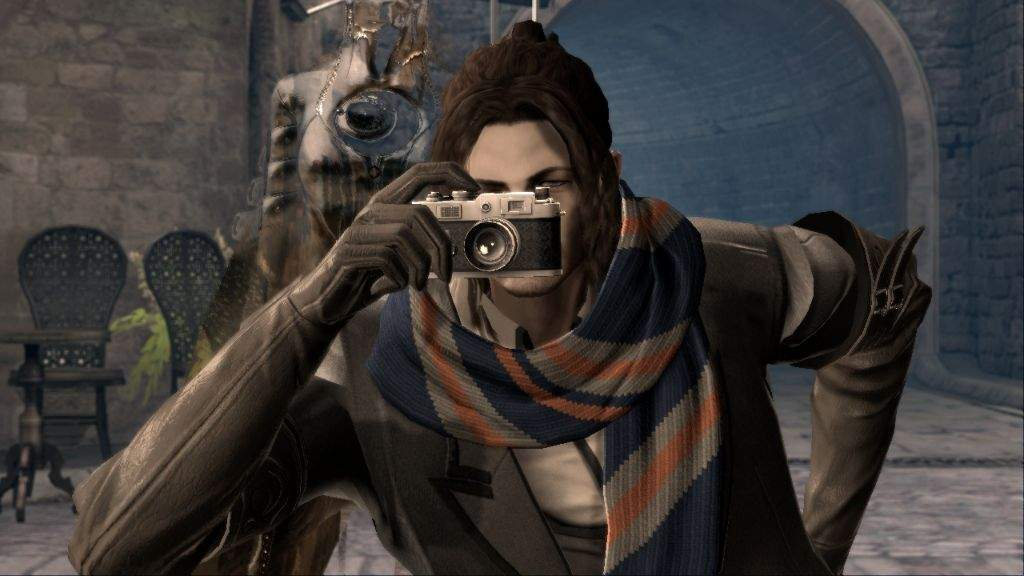
In their occasional encounters with each other throughout Noatun, Luka explains to Bayonetta how the Eyes came to be. They were created by a god named Aesir, who pitied humans for their lack of free will and divided his power to grant it to them, using his eyes as vessels to do so.
There’s also something about how humans perceive and manipulate reality to benefit ourselves, and how Aesir and his eyes . . . changed that, or created an objective reality?? Here’s the quote:
“…Where we only see reality and make it match our rules of the world, Aesir saw through reality, and those visions became our world. These observations became Aesir’s power. Aesir’s eyes were truly the eyes that created the world.”
The frick does that even mean
Any help at all in untangling the messy ball of yarn that is Bayonetta’s worldbuilding is appreciated, and the additions/clarifications Luka brings in Bayonetta 2 flesh out the world greatly. However, the vagueness that characterized much of the background lore in the first game is still maintained. A lot of its finer details have been lost, like the truth of that earlier quote, yet the important aspects are elaborated on enough to ground the story.
It’s that dichotomy between factuality and mystery that I really love about Bayonetta’s lore, and 2 juggles them expertly.
Not to mention that, for the first time, we actually get to see, directly, what Inferno is like.
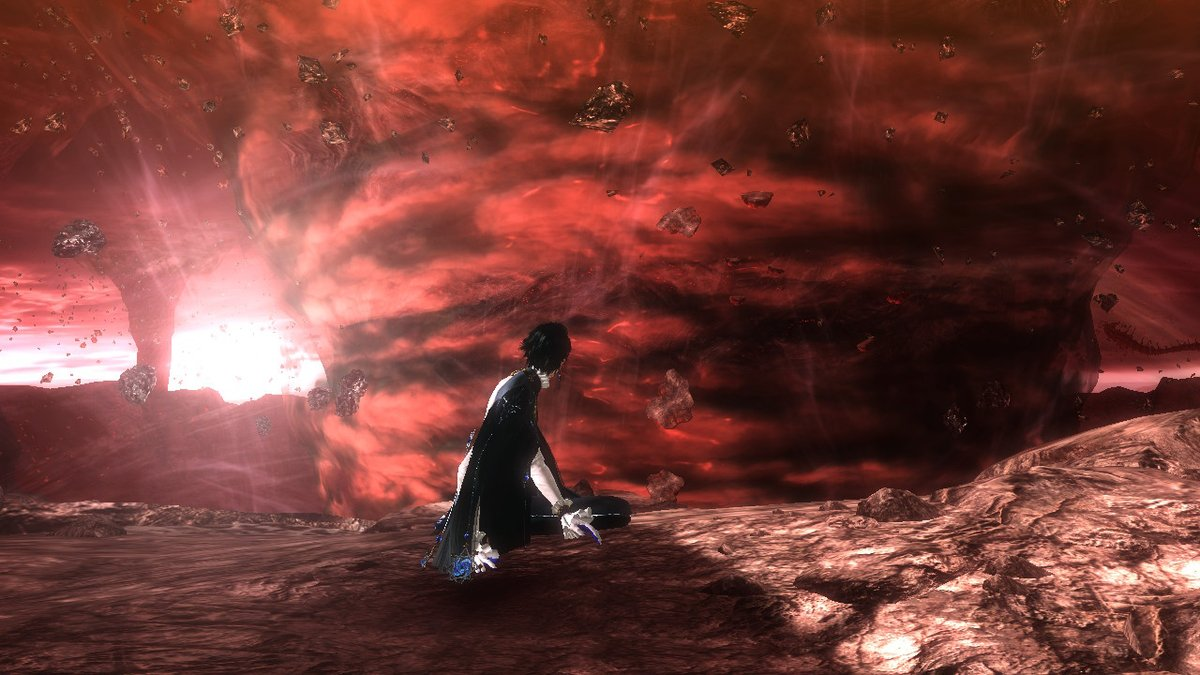
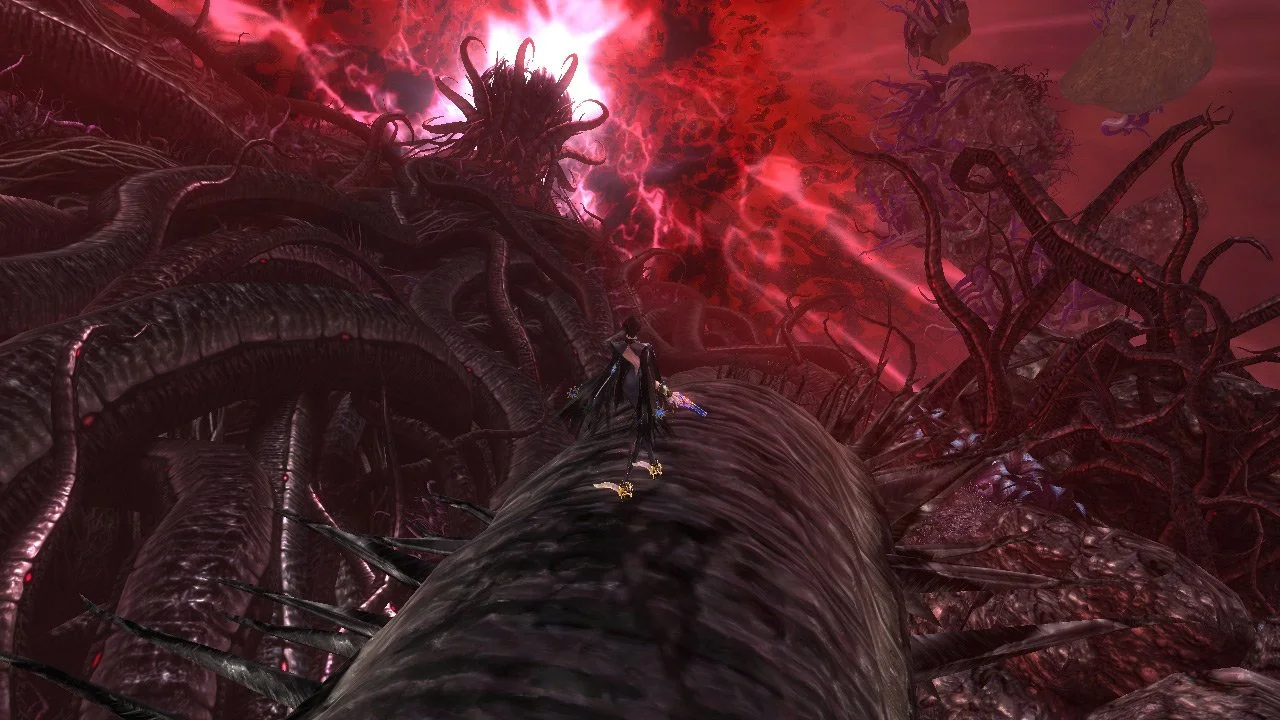
Once Bayonetta does manage to worm her way in, we find that it’s not like the Biblical version. Instead of unquenchable fire and brimstone, Inferno’s full of desolate cliffs, dried-out badlands, massive, tangling, rotting roots and vines, and blood-red dust tornadoes eroding away at everything around them.
It’s all very apocalypsecore, and I love it.
The original game showed snippets of the angels’ territory, but Inferno was never shown in any real detail beyond the notions that a) it’s where the demons originate, and b) it’s where an Umbra Witch’s soul will go when they die.
Given how massively important a place it is in the Bayonetta mythos, it’s so SO COOL to see Inferno firsthand. And its inclusion makes the universe feel much more . . . whole.
That’s a perfect summation of all the worldbuilding Bayonetta 2 does, actually, now that I think about it.
The shown consequences of witchhood, the clarification of many vague lore aspects, the introduction and subsequent exploration of Aesir, and the relevance of Inferno all make the universe of Bayonetta feel more whole in genuine, natural ways.
It doesn’t take a complete left turn and build up random world details; it delves into what the series had already established, and Bayonetta 2 does a fantastic job exploring them.
But, while I personally come to Bayonetta for the characters and lore, a vast majority of people come for the series’ sublime gameplay.
Bayonetta 2’s gameplay is largely unchanged from the original’s;
It’s structured in a chapter format, where you select a specific chapter to play through from a dedicated selection menu. You can also head to the Gates of Hell, practice your moves in the nondescript blue void, and adjust various settings like difficulty as well.
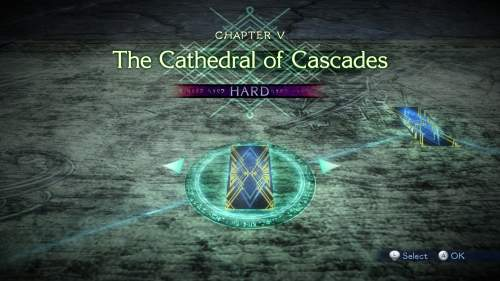
Once you’re in a chapter, you’ll progress through a linear level and whatever storybeats are in it. Periodically you’ll find yourself in enemy encounters, which are accompanied by BANGER TUNES
MOOOOOOOOOOON RIVERRRRRRRRRRR
WIDEEEEER THAN A MIIIILE
I’MMMMMMM CROSSSSING YOU IN STYLE SOMEDAAAAAAAAY
OHH DREAMMMM MA-KER
YOU HEART-BREAAKERRRR
WHEREVER YOU’RE GOIIINGG
I’M GOIIINGG YOUR WAY
TWO DRIFTERRRRRRRS
OFFFFFFF TO SEE THE WORLD
THEEERRRRRRRRRE’S SUCHHH A LOT OF WORLD TO SEEEEEEEEE
WE’RE AFFFFFFTERRRR THE SAAMMME RRAINBOW’S ENNNND
WAITING ‘ROUND THE BENNNND
MY HUCKLEBERRY FRIEND
MOOOOOOOOOOON RIVERRRRRRRRRRR
AND MEEEEEEEEEEEEEEEEEEEE
(Moon River is really really good go listen to it)
But while those tunes are in fact, very banging, slappers if you will, how exactly do you slap the enemies that that music chaperones?

You have a light attack and a heavy attack, and depending on what order you chain them in, what weapon you have equipped, and whether you do it on the ground or in the air, the final attack will change.
For example, if you spam the light attack button while armed with the gun quartet Love is Blue and are grounded, Bayonetta will launch into a flurry of light attacks, punctuated with a massive punch from the demon Madama Butterfly.
These attack strings and their final strikes can be combo’d, canceled, and re-combo’d together endlessly, allowing you to juggle your enemies and REALLY bring the pain.
Each weapon has its own catalog of combos for you to make use of, and, on top of that, you can actually wield two weapons at once if you’re so inclined.
A small, but important facet of Bayonetta’s brand of fighting is how she uses both her hands and her legs. All of her weapons can be affixed to at least one of these, if not both, so mixing and matching these tools of warfare is very much an option.
For example, you could equip the chainsaws Salamandra to Bayonetta’s legs because who wouldn’t want chainsaw heelies, while using the giant, triple-bladed scythe Chernobog on her hands.
Not to mention the fact that you have two separate loadouts you can swap at a moment’s notice, so you really can have four weapons at your disposal at any given time.
While you might have the chainsaw heelies and Chernobog equipped in one loadout, the other might have the elemental maces Undine and thorny whip Alruna, or the bow Kafka and Love is Blue on standby.
And the combo’ing potential of this many weapons at once is just as insane as you’re imagining.
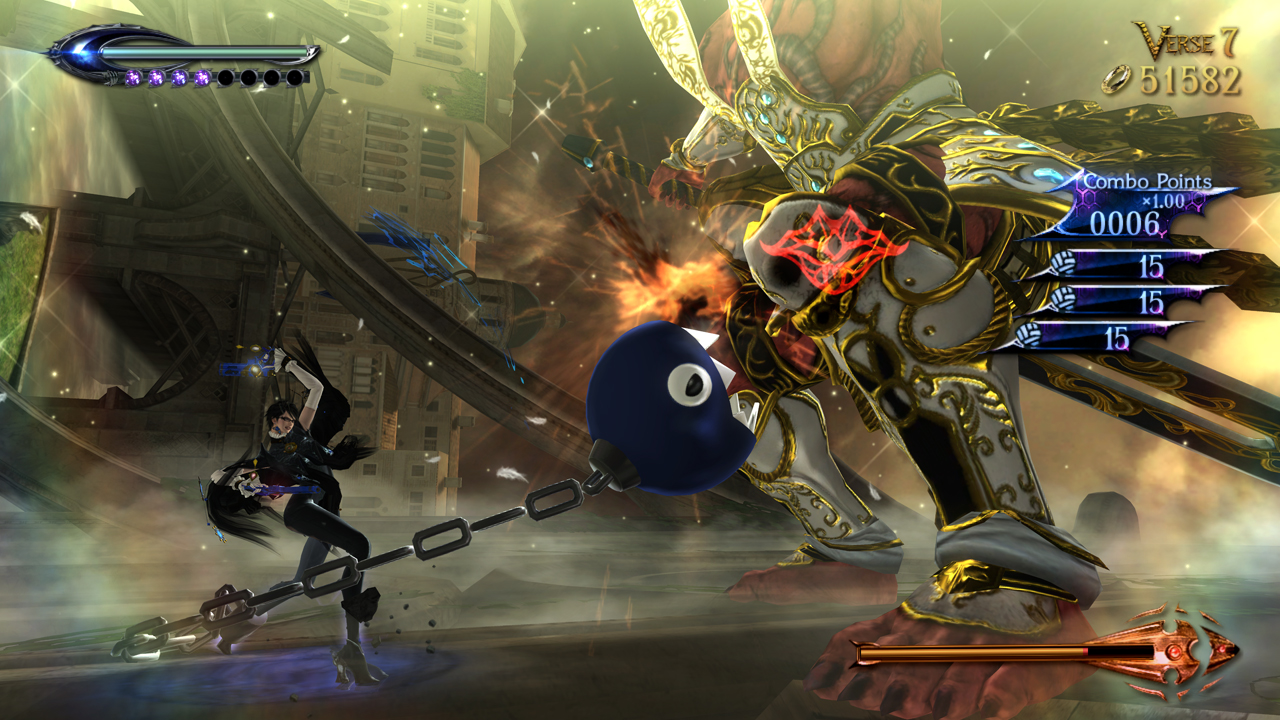
My personal favorite weapons are the aforementioned chainsaw heelies (I just think they’re cool and funny), the Chain Chomp (whom I’ve named Biscuit and who is absolutely BROKEN), and the Rakshasa (equally broken demonic samurai swords).
You obtain these weapons by collecting pieces of angelic LPs throughout the levels, which, gotta admit, is a little annoying. But thankfully, we live in the age of the Internet so there are plenty of guides online that can tell you where these cheeky buggers are. I actually missed most of the weapons in the game on my first playthrough, and only got to mess around with them on my second, guide-assisted playthrough, so I can attest to this.
The only exceptions to this are the characters’ exclusive weapons, like Rosa’s Unforgiven and Jeanne’s All 4 One, and Biscuit, whom you can either obtain by scanning an Amiibo of a Mario enemy or by beating the entire game on the hardest difficulty.
But do note that you have to buy skills using Halos, the game’s currency, with Rodin at the Gates of Hell, so you can’t go full throttle right out of the gate(s of Hell). This is a system carried over from the first game, and it’s a pretty good way to handle an upgrade system, I think! It forces you to spend your Halos with purpose and encourages you to replay levels to get more, something the series further encourages with the trophies you’re given at the end of the levels.
Also returning from the first game are Witch Time, the Magic Meter, and the Torture Attacks.
Witch Time is an exceptionally useful maneuver that I’m only now realizing I didn’t introduce earlier when I was talking about the series’ playable characters, so I’ll do that now.
By dodging enemy attacks at just the right moment, time will slow down considerably. This lets you exploit the now-frozen enemies, able to get free hits in and pummel them into the dirt uninhibited.
This is one of the main mechanics throughout the entire Bayonetta series, and it’s as rewarding as it is purple. If you’re aiming to get better trophies, more Halos, and just generally have a good time, Witch Time is your Friend.
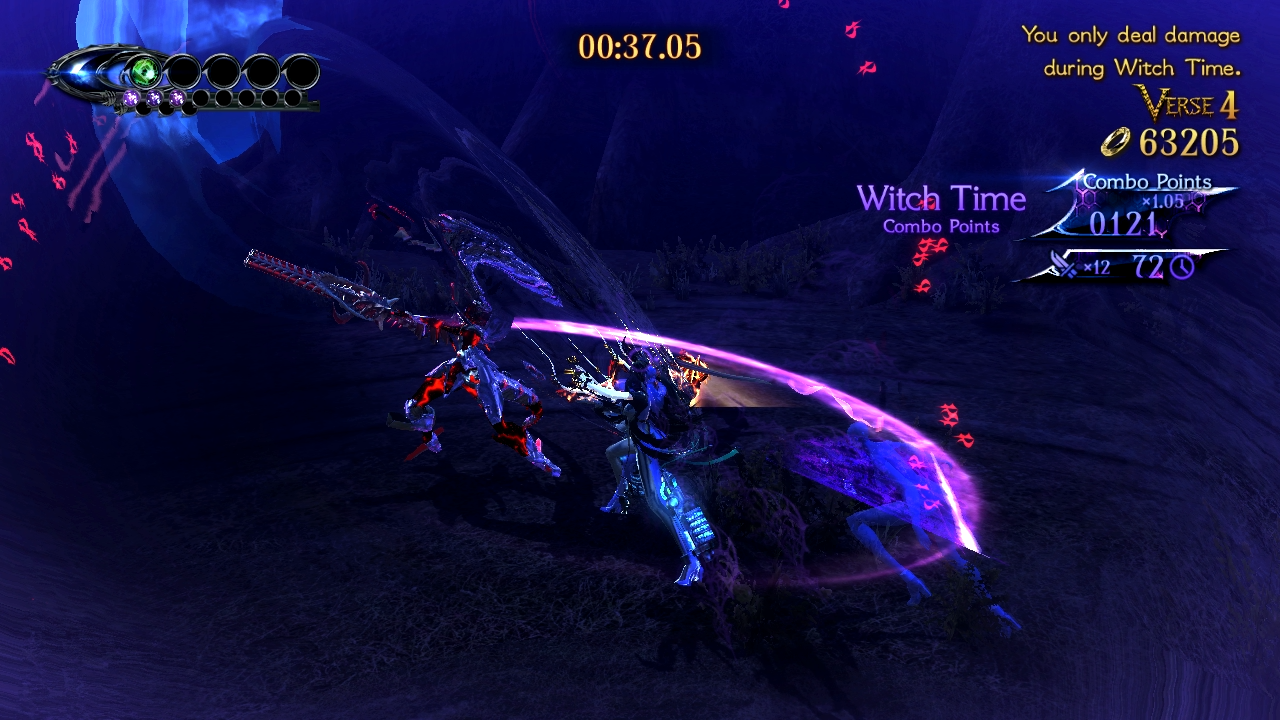
As Bayonetta continually assaults enemies and activates Witch Time, the line of circles beneath her health bar will gradually fill up. This is the Magic Meter, and once it’s full, you can unleash something called a Torture Attack. These are incredibly powerful moves that eat up the entire Magic Gauge in exchange for instantly killing one enemy.
These big attacks were an important part of the combat in the first Bayonetta, but they’re made kinda pointless, or at least suboptimal, by the biggest addition Bayonetta 2 brings to the combat table: Umbran Climax.
Activating Umbran Climax doesn’t sacrifice the Magic Meter in its entirety, rather, it drains it slowly. What this also does is massively increase your firepower, boosting both the damage and range of your weapons to insane heights.
Take the Rakshasa, for example. Enhanced by Umbran Climax, the Rakshasa’s limited-range slicing transforms into explosively wide-spanning slashes that just EVISCERATE enemies.
Speaking of, while the angels obviously return, with new types in tow like Acceptance, Compassion, and Fidelity, they’re joined in their objective of impeding Bayonetta by the demons. Like the evil go-kart Pain and Resentment, whom I do indeed resent.
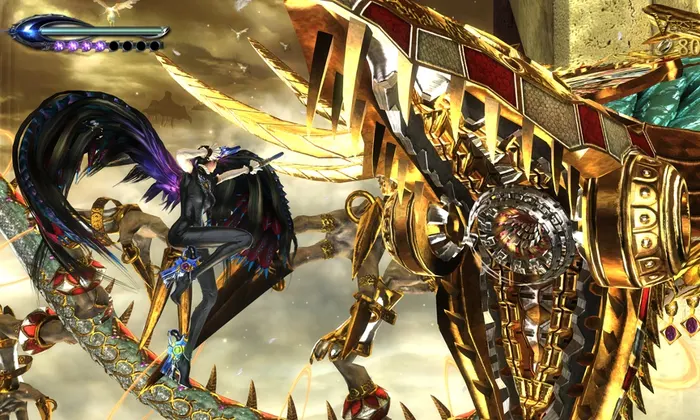
They’re overdesigned to high heaven and have this biblically-accurate angel vibe that goes so unbelievably hard it could turn coal into diamonds. The newbies are no slouches either; the new angels still embody that gilded, ornate, “be not afraid” style, while the demons have this fleshy, dark look to them that contrasts the angels and suits Inferno perfectly.
While the enemies are just as aesthetically fantastic as those of the first game, if not better, in terms of their challenge . . . they’re divisive.
The original Bayonetta is definitely a challenging game, no buts about it. The angels are exceptionally strong and your stock of healing items is heavily limited, so you can’t just flail about, swinging your arms and legs every which way and hope you win. You HAVE to play well, or you will be punished, even on normal difficulty.
Bayonetta 2, on the other hand, turns down the difficulty to a lower, more comfortable degree. While the maximum amount of healing items you can have is still limited, the angels and demons aren’t nearly as dangerous. Taking big hits won’t chop off a massive hunk of your HP anymore. If you get hit a lot, you will still die, but it’s nowhere near as harsh.
I’m personally a fan of this lower difficulty, but I get why so many people dislike the change.
The crushing difficulty was a part of the experience of playing the first game, and overcoming the stupidly powerful angels and seeing Bayonetta utterly wreck them afterwards was something truly euphoric.
In being easier, Bayonetta 2 doesn’t quite replicate that feeling.
But, if I had to choose between the two, I’d choose Bayonetta 2’s difficulty over the first game’s any day of the week, it’s not even a contest. I like just getting to have fun with Bayonetta without being stressed out of my mind about slipping up and dying, which would inevitably lead to me slipping up and dying.
Bayonetta 2’s combat doesn’t reinvent the Bayonetta wheel; the mechanics that characterized the first game’s already-great combat are all still here, but the addition of Umbran Climax and the adjusted difficulty make the game so much more fun.
It’s the perfect evolution of the combat the first game boasted, and the new enemies Bayonetta takes on, even if they are easier, fit seamlessly into the world.
With one exception, that is. The rival character with whom Bayonetta repeatedly clashes happens to be notable for not fitting in neatly. The first game had Jeanne, and 3 had Strider, but Bayonetta 2 has the Masked Lumen Sage.
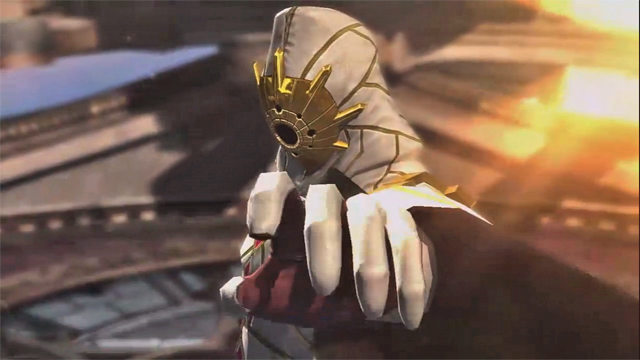
This enigmatic, double edged-spear-wielding figure is not only a challenging sparring partner, with their fast slashes and summoning of higher-sphere angels, but they also provide a cool mystery.
Something I deliberately didn’t mention is that Lumen Sages and Umbra Witches aren’t, like, a species or anything like that. Anyone can become one through enough training under the guidance of a veteran of their arts, something which Origins gives us a glimpse of.
But, reminder, Bayonetta killed the very last Lumen Sage at the end of the previous game and, knowing their personality and goals, there’s no chance that they’d had an apprentice. There’s a great likelihood that whatever training it takes to become a Sage died with them.
So . . . then . . . how??
The actual answer to that question is kinda dumb, but the Masked Lumen is a really cool character and their motivation to hunt down the game’s sidekick character (whom I’ve not introduced yet) gives us insight into them that we had never seen before.
There is one last tweak to the gameplay that I need to bring up, though it’s not exactly part of the combat like the Masked Lumen Sage is, so it gets its own mini segment.
In the first game, you’d frequently be put face-to-face with quick time events in the middle of cutscenes. Either split-second button prompts or button mashers. Whichever they were, these things would automatically kill you if you messed them up.
I’m not going to mince words here, these things SUCK. They come out of complete nowhere and are so frustrating and have such tiny windows of opportunity that they are a brick wall preventing me from replaying the original game in full.
Thank Aesir, Bayonetta 2 removes these. The QTE’s that are in this game are purely for extra Halos, and there’s no risk about Hideki Kamiya suddenly appearing from the woodwork and putting a gun to your head when you think you’re safe.
Genuinely one of the best changes, I’m not kidding.
But, above the worldbuilding additions, the sublime music, the great combat, and the REMOVAL OF THOSE DANG INSTAKILL QUICK TIME EVENTS, the greatest part of Bayonetta 2, and the reason it’s my favorite game in the series and even one of my top ten of all time, is how it explores Bayonetta as a character.
Which is, yet again, another divisive part of the game.
See, in the original game, she had this immediately recognizable, iconic snark to her. No matter what variety of angels crossed her path, she’d always respond with nonchalance and disrespect, all in a motherly, sophisticated tone that rang both badass and seductive. For many people, this snark and how overwhelming it is is a defining character trait of Bayonetta’s.
But the overwhelmingness of it is something that gets rolled back in Bayonetta 2. It’s not completely erased, or replaced with anything more generically protagonisty–this is still Bayonetta we’re talking about here–but it is definitely noticeable.
To understand this aspect of her character, and more importantly why it’s dampened in 2, I need to go over Bayonetta’s characterization in that original game more closely.
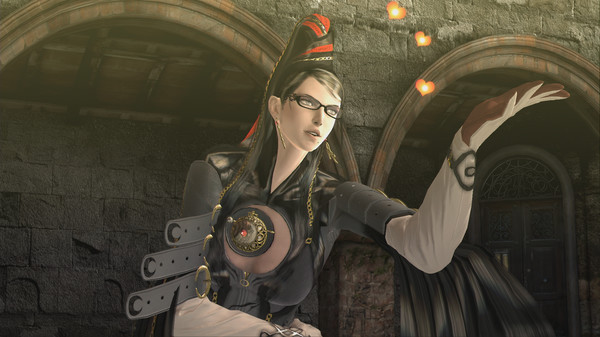
In Bayonetta, Bayonetta was traversing the renovated European city of Vigrid in an attempt to seek out the truth of her forgotten past and identity. She had a really bad case of amnesia, and, truth be told, it was a source of great anxiety for her.
She didn’t know who she was, where she came from, why she was the way she was; nothing. Bayonetta was alone in the world, with no one to turn to for support.
Sure, she had Rodin and Enzo, but those were professional relationships more than anything else.
Isolation and loneliness were Bayonetta’s only companions.
It’s such an important part of her character that it bleeds into the battle theme, Mysterious Destiny.
BAYONETTA, YOU MYSTERY (WHO…)
YOU CAME ALONG WITH A DESTINY (…ARE YOU)
THIS IS YOUR LIFE
A BATTLEFIELD TELLING YOU
WHO
YOU
ARE
BAYONETTA, THIS IS YOUR TIME
YOU’RE GONNA SPARKLE
YOU’RE GONNA SHINE
GIRL WHEN YOU FIGHT, IT LOOKS LIKE A DANCE
YOU ARE MAGIC
YOU’RE MAGIC
C’MON, C’MON
COME ON, THERE’S ONLY ONE WAY
YOUR WAY
C’MON, COME ON,
YOU KNOW THERE’S ONLY ONE WAY
YOUR WAY
DANCE, FIGHT
SPIN AROUND, SPIN AROUND
DANCE, FIGHT
FLY HIGHER, FLY HIGHER, FLY HIGHER
BAYONETTA, YOU BURY YOUR LONELINESS DEEP DOWN IN YOUR EYES
SADNESS LIES IN YOUR SMILE
BUT VICTORY SHINES IN YOUR EYES (YOU WILL FIND IT)
YOU’RE STILL ALIVE
You wouldn’t think that any of that were true, seeing her effortlessly tearing through enemies with style, confidence, and uncompromising snark without context. But, in context, that uncompromising snark takes on an entirely different, sadder meaning.
Bayonetta, throughout the first game, was overcompensating. She covered up her insecurity with a mask of charismatic sarcasm and sensuality. Sure, some of that was just her personality, but the extent to which she played it up is apparent.
In the end, though, she was able to unravel the mysteries of her origin. Bayonetta was confronted with the truth of herself, the real reasons why she is the way she is, and she made it out the other side. She’d discovered her motherly side with little Cereza; she’d grown to care for the bumbling Luka; she’d found a genuine confidante in Jeanne.
Bayonetta was able to salvage the lost parts of herself because of what she’d experienced in Vigrid.
Even her relationships with Rodin and Enzo had changed!
Would the uncaring, snarky Bayonetta from the beginning of the first game choose to take time out of her day to accompany Enzo on his holiday shopping?
I don’t think so.
It’s a beautiful arc showing that, no matter how old you are, be you a teen, adult, or a 500-year old witch, you never get to a point where you’re blocked off from growing as a person. Making friends, discovering new aspects of yourself, and actualizing your dreams are things you never stop doing. It’s not just something limited to high school and prior.
And struggling is the same way. Strife is a natural part of being alive, after all.
Being lost is something everyone experiences in some way at some point, be it because of being ground down to nothing by work, losing passion with a hobby, disillusionment or conflict with someone or something; anything. But no matter how long it may take you to find your way again, it’s okay. Everyone’s path in life is different and taking “too long” to take the next step isn’t penalized like it is with lower-value medals and statues in Bayonetta; there’s nothing wrong with not being able to move forward immediately. On the path of life, taking a moment, minute, hour, day, month, year, or more to take a breather is okay.
And if those FRICKING instadeath QTEs didn’t exist, I’d be foaming at the mouth to re-experience Bayonetta’s route to that conclusion.
With this arc in mind, it’s only natural that Bayonetta would be less snarky in Bayonetta 2. No longer does she need to desperately clutch onto a mask of false boldness. She has found true assurance in herself: her sensuality, her bravado, and her zest for life are authentic in a way that they never really were in . . . really most of the first game.
In being rolled back, Bayonetta’s snarkiness makes her such a more nuanced character that feels so much healthier while still retaining what made her so much fun to follow. She’s still the same person, still the snarky, sexual, confident badass she’s iconic for being, but now, Bayonetta’s able to be more honest with herself and her feelings.
She really feels like a human being. Bayonetta’s character arc may be over, but her life is not, and she’ll continue to carry on until whenever she draws her last breath.
As long as there’s music, she’ll keep dancing.
Bayonetta’s also able to be honest with complete strangers, not just herself or those close to her.
One in particular is very notable, that being this kid:
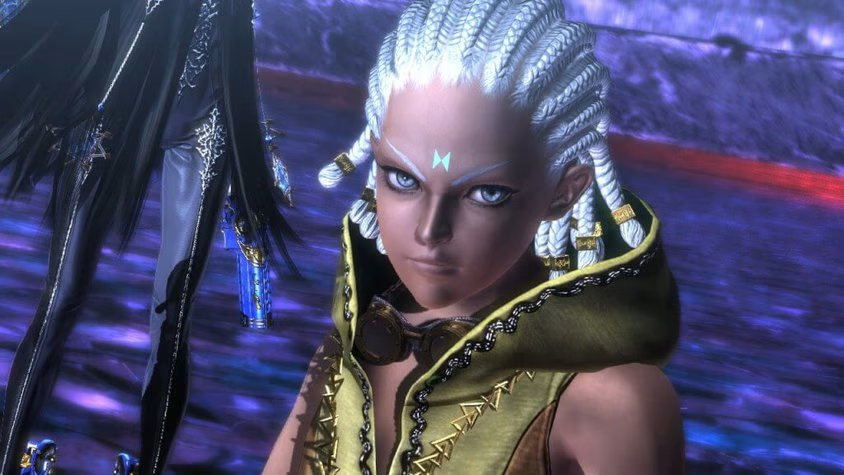
This is Loki. He’s the sidekick character in Bayonetta 2, like little Cereza before him and Viola afterwards.
Whereas little Cereza was a sweet little kid and Viola was a goofy goober, Loki is kinda like, a snotty middle schooler who fakes swagger and watches those terrible alpha male videos on YouTube.
Oh yea and he’s also that squirrel that Bayonetta almost crushed at the start
Bayonetta first meets him in his human form at a monument/church/waterpark a little ways into town, where he’s being attacked by some angels. He’s able to handle them well enough with his card tricks, but Bayonetta has to take care of the last one, which he didn’t even notice. The two have a little bit of a chat, the witch curious as to why and how this random teen is in Purgatorio, but Loki soon scampers off.
However, it’s not long before Bayonetta’s and Loki’s paths cross once more, at which point they decide to work together.
Loki, you see, is also heading to Fimbulventr. Why? He’s not actually sure, or much about himself at all really, but he’s determined to get there nevertheless.
While he’s not the most combat-seasoned, given that he completely missed a whole ANGEL which, reminder, are roughly the size of a car and look like this:

Loki is quite knowledgeable about the local terrain and knows the route to get to the top of Fimbulventr, angels getting in the way notwithstanding.
Bayonetta, with the clock ticking, doesn’t have time to waste aimlessly chucking herself up the mountain, nor is she exactly the most inclined to let this kid run off to his death via angel spear, so she elects Loki as her guide.
While most people don’t like Loki, so much so to the point where “Bayonetta 2 Loki annoying” is one of the top auto-fill results when looking him up on Google.
I get exactly why, but I quite like him.
Like I said, the characters are the story, and how these fantastic characters evolve is where the story really is. Loki is no exception; he goes from that snotty, middle schooler to . . . still a middle schooler, but one who’s trying to make the world a better place in what small ways he can, with a confidence in himself that he doesn’t need to fake. Still a little cringe, but infinitely better than how he started.
And he’s able to get to that point because of Bayonetta, a person who’s struggled with what he’s going through and shows him empathy despite his obnoxious, snotty middle schooler-ness.
One of the best examples to show this is in Chapter 5, The Cathedral of Cascades. In this chapter, the duo crash-land in a lake near the titular, waterworn cathedral after an encounter with the Masked Lumen. For a brief moment after their landing, Bayonetta is unconscious. Loki takes this “opportunity” to try and kiss her, but, thankfully, he passes out before he can make his little non-consensual wet (get it because they’re in the water) dream come true.
You see why people don’t exactly like him?
Bayonetta soon jolts awake and is able to get them both to shore, but . . . Loki isn’t waking up. No matter how much she shakes him and commands him to get up, he’s unresponsive.
Until he drops the act, that is, because it was all just a haha funny joke! Loki cackles, making fun of Bayonetta for having emotions, before they get back on track and head into the cathedral. Once inside, and after taking care of a demon, the two have a very enlightening conversation.
Loki states that a shortcut bridge is just above them, but after some inquiry and corroboration from Bayonetta, he accidentally opens up about how he really doesn’t know anything about himself. His knowledge of most everything is instinctual, something he’s unsettled by. Why does he know that the bridge is up there?
. . . why does he need to go to Fimbulventr so badly?
It’s actually quite a scary thing if you think about it. Knowing that you ABSOLUTELY HAVE to go somewhere, there’s no two-buts about it, and know how exactly to get there, but not knowing why it’s of such importance. That, on top of not having even so much as an inkling of who you even are, would be terrifying.
Bayonetta sees a lot of herself in Loki. And she’s determined to give him the one thing she never had on his journey of self-discovery: someone to lean on. The petrifying fear of not knowing who you are is only exacerbated by not having someone in your corner, and Bayonetta knows that better than anyone else.
If she’d had someone, anyone, who’d shown her care back then, if she’d had even just one person to alleviate her loneliness even just a tiny bit, it would’ve been easier. She may not have spent so, so long going around in circles. She’s not ashamed or regretful about how long it took for her to reach the point she’s at now, but she does wish that it could’ve been less painful, shorter. And while she can’t give Loki the answers he’s looking for, Bayonetta can at least give him a bit of advice.
I’m just gonna give you the transcript of their conversation, because the scene really speaks for itself.
L: “This is it. The bridge to the heavens should be right above us.”
B: “Are you sure?”
L: “Heh. Not really.”
B: “Not really, huh? But you’re right. This is it. Call it a woman’s intuition.”
L: “Woman’s intuition. What kind of silly comic book [POOP] is that? You still don’t know a damn thing about me.”
B: “Let’s just say I have plenty of experience with “nothing coming to mind.””
L: “What?”
B: “I spent 500 years not knowing who I was. I only found out the truth recently.”
L: “Y-you too? Listen, I don’t remember a thing. Nothing. I don’t even know why I’m so damn sure I need to go to that mountain. But I know I have to. It’s all I know. Does that make any sense?”
B: “Come now, little one. Can’t let the girls know you’ve got a heart.”
L: “I-it’s not like that!”
B: “If that’s all you know, that’s all the sense you need. Just believe. That’s what I did.”
L: “Bayonetta…”
Just . . . dang, man. Bayonetta showing such unprompted empathy to someone who she’s only just met less than a day ago would be a complete impossibility if this were the Bayonetta from the first game. She would likely still see herself in him, but this interaction would not have happened anywhere near as early.
But it’s the fact that it is so early that gives Loki the chance to grow like he does. It’s to the point where he puts his journey to Fimbulventr on hold to help Bayonetta get into Inferno.
God, I love this game.
Also, I appreciate that she throws a roast in there about him getting emotional so easily when he gave her lip for doing the exact same thing earlier in the chapter. That’s cathartic, AND in-character!
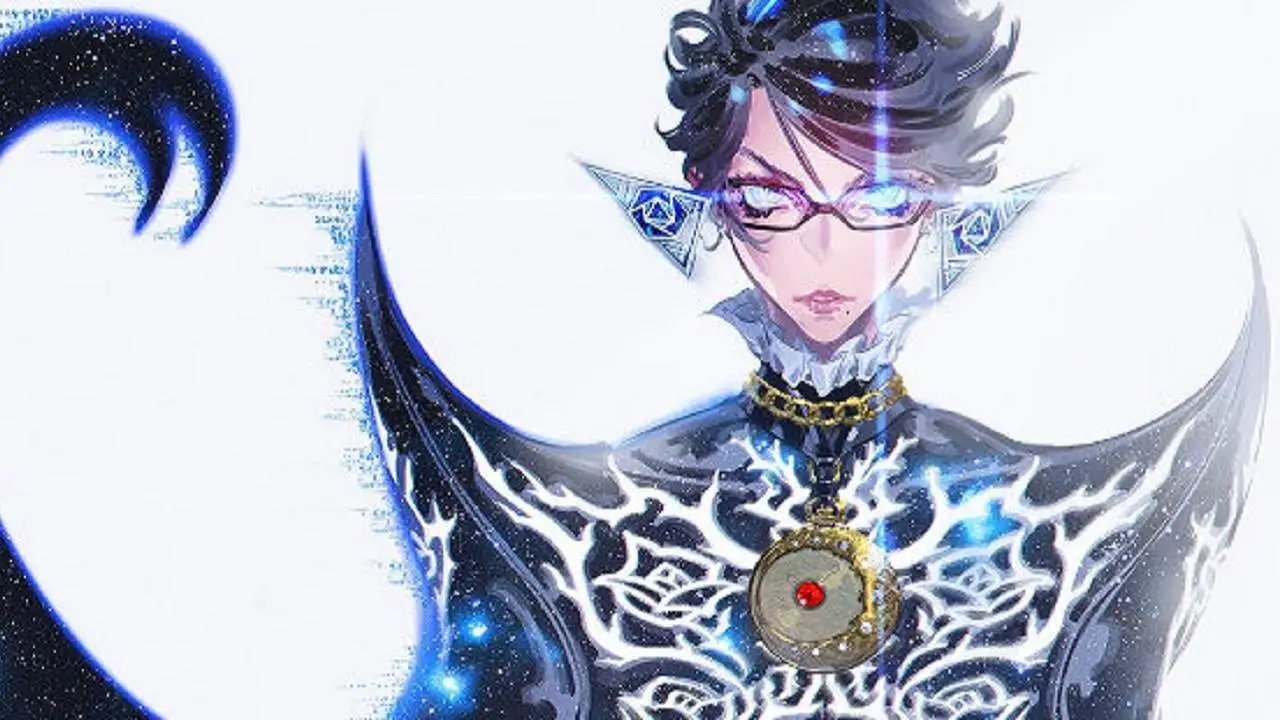
So . . . That’s Bayonetta 2. With its expanding the universe of the original, phenomenal music, mixing up of the combat just enough to feel fresh, and, surprisingly, a fantastic exploration of its title character at its core, it’s solidified itself as one of my top ten games of all time.
I don’t know where exactly it falls on that list, because besides Library of Ruina having the crown and sitting atop a lavish throne, undisputed at the top, I don’t really know where any of my top ten games fall either.
Looking back now, it’s not only the ending of Bayonetta 3 that made my experience with it so sour. Like, it’s still atrocious do not get me wrong, but its depiction of Bayonetta is what really ruins it for me.
Instead of having this nuanced, empathetic, badass witch at the helm, Bayonetta 3 has a character more similar to the one from the original game. Snark and cockiness abound, but she lacks empathy for the strangers suffering and literally dying around her.
The only remote remnant of her that characterization from Bayonetta 2 is in her interactions with Luka, who’s contracted, like, multiversal chronic wasting disease or something. Which, yeah! It is very nice to see Bayonetta caring for this loser who she’s become fond of over her adventures, ordering Viola to keep an eye on him while she deals with the more actively pressing issues, but the ending makes sure to sour that too.
And yes, I know that it literally is not the same character. It’s a different Bayonetta variant from a different universe from the one from 1 and 2, but that’s something that’s not made clear until the literal last half hour of the game. I was under the impression that this WAS the same character, and, months later I still struggle to separate my experience with the game from that impression.
Maybe it’s a skill issue idk
Though, there is another side of this coin. It means that this healthier, frankly better Bayonetta is still somewhere out in the multiverse, living her best life with Jeanne, Luka, Rodin, Enzo, and whoever else gets caught up in her misadventures.
And that makes me really happy.
While I still have you here (you’re trapped), I want to share some miscellaneous Bayonetta facts because the brainrot has a vice grip on me, not dissimilarly to how cordyceps fungi puppeteers ants.
-There is a Bayonetta anime movie that adapts the story of the first game with a couple of minor changes, called Bayonetta: Bloody Fate. It’s pretty cool.
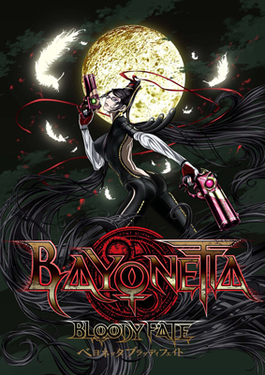
-All of Bayonetta’s signature angel/demon/homunculi-slaying guns are named after classic jazz songs. Scarborough Fair is named after the song by Simon & Garfunkel, Love is Blue by Paul Mariat, and Color My World by either James Parkow or Petula Clark. I’m not sure which Color My World they’re named after specifically.
-Bayonetta’s guns in Bloody Fate also follow this pattern, but they’re a little different. Instead of being named after a 1900s jazz song, they’re named Elfin Knight, after the Scottish folk ballad of the same name.
-Many of the main battle themes in the series are remixes of classic songs. Fly Me to the Moon by Frank Sinatra, Moon River by Henri Mancini and Johnny Mercer, and Moonlight Serenade by Glenn Miller.
-Frank Sinatra’s Fly Me to the Moon canonically existed in the dark ages, as a flashback showing Rosa singing it to a baby Bayonetta shows.
-At the time of its release, Sega was struggling to find someone to help them publish Bayonetta 2. Nintendo of all people swooped in to help, and it was released exclusively on the Wii U. Since then, new Bayonetta games have only been released on Nintendo consoles, and the series has effectively become a Nintendo franchise.
-Bayonetta is a fighter in Super Smash Brothers for Wii U/3DS and Ultimate. Like all fighters, she has her own Amiibos. One for her Bayonetta 1 design, and one for her Bayonetta 2 outfit.
–Bayonetta 2 on Wii U has Amiibo support, as does its 2018 Nintendo Switch rerelease. The Wii U version of the first game that was released alongside its sequel didn’t, but when it came to Nintendo Switch, the functionality was added.
–Bayonetta 3 does not have Amiibo support of any kind, despite it being solely a Nintendo Switch game.
-This:
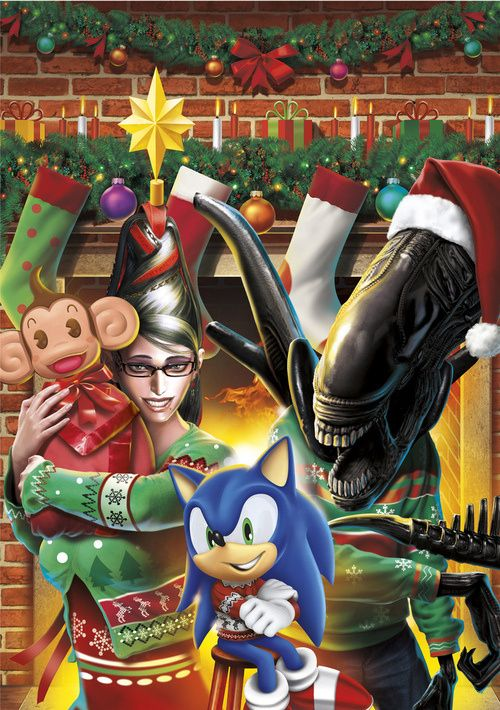
This is an official Christmas artwork from Sega back in 2009. No, I don’t know why Alien is there.
–Bayonetta 3’s Bayonetta is visibly shorter than her 1/2 counterpart.
-There is an official Bayonetta pachinko game, called Bayonetta Pachislot, and it has its own music. All of it is on par with that of the console games. Scent of Love in particular is phenomenal. Listen to it here.
-The Japanese fashion company SuperGroupies, known for making expensive merchandise based on famous franchises like Kingdom Hearts, Trigun Stampede, The Legend of Heroes/Trails, and Cowboy Bebop, made some Bayonetta merchandise in early 2023 for Cereza and the Lost Demon’s release.
-The lyrics of Cereza and the Lost Demon’s main theme, Together in the Moonlit Forest, are in Irish.
-Like many witches in folklore, Bayonetta’s power comes from her hair. It’s how she anchors her demons in Purgatorio and it’s also what her iconic outfits are canonically made of, which is why they vanish when she pops out Madama Butterfly, Baal, War Train Gouon, or any other demon.
-Bayonetta can say “Mama Mia!” in Bayonetta 2 if you put the Mario hat/mustache on her.
-There are Funko Pops of Bayonetta and Jeanne as they appear in Bayonetta: Bloody Fate that were sold exclusively at Gamestop. They were released in a box full of other merchandise, including a Cheshire doll, a kinda cheap plastic keychain version of the Left Eye, and a replica of Scarborough Fair.
-The final boss of Bayonetta 2 shows a striking resemblance to Jeff Goldblum’s character in Thor: Ragnarok.
-In Bayonetta 2’s concept art shows that at one point it was considered for her to have a mullet.
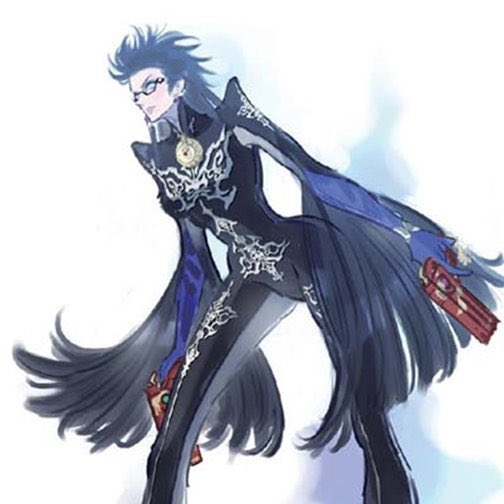
Something fun to note as well with this art is that Bayonetta is using Scarborough Fair, not Love is Blue.
-Bayonetta and co. have appeared in many other games as crossover characters, like Last Cloudia and Anarchy Reigns. Most relevant to me, though, is the mobile game Shin Megami Tensei: Liberation Dx2. In that game, Bayonetta and Jeanne are both powerful bosses and playable characters that you can add to your party alongside SMT-staple demons.
It just feels fitting to put them in the same team as Mara.
-The original Wii U version of Bayonetta 2 has Gamepad controls with an exclusive ring-shaped timer that informs you of how long you have to get another hit in before you lose your combo.
-There is a series of books that show off concept art, character sheets, and the like for the games called The Eyes of Bayonetta. It’s because of The Eyes of Bayonetta 2 that we know Mulletnetta existed at one point.
–Bayonetta 3 adds the Naïve Angel Mode to the series, a setting which removes/replaces some of the adult content in the game. For example, Bayonetta no longer becomes naked when she summons her demons, and Rodin’s smoking is replaced with what I think is some sort of crunchy pastry. I’m not sure.
I think this is a good addition to the game and series going forward. It substantially widens its appeal to those who are pensive about jumping in because of Bayonetta’s sensual nature, while not taking the option away from people who like the more mature content the series has on offer.
It also had the personal benefit of making some manchildren on Twitter have mental breakdowns so like, good work Platinum! Keep it up!
-As Bayonetta is on Steam, there is a thriving modding community. Most mods center on changing Bayonetta’s model, like into her outfits in 2 and 3, but there are also mods dedicated to changing her into a different character entirely, be they someone from the Bayonetta series, like Luka, or someone from a completely nonadjacent franchise like Kirby. My personal favorite, though, is Kerminetta–Kermit Bayonetta.
Yes, Kermit.
From The Muppets.
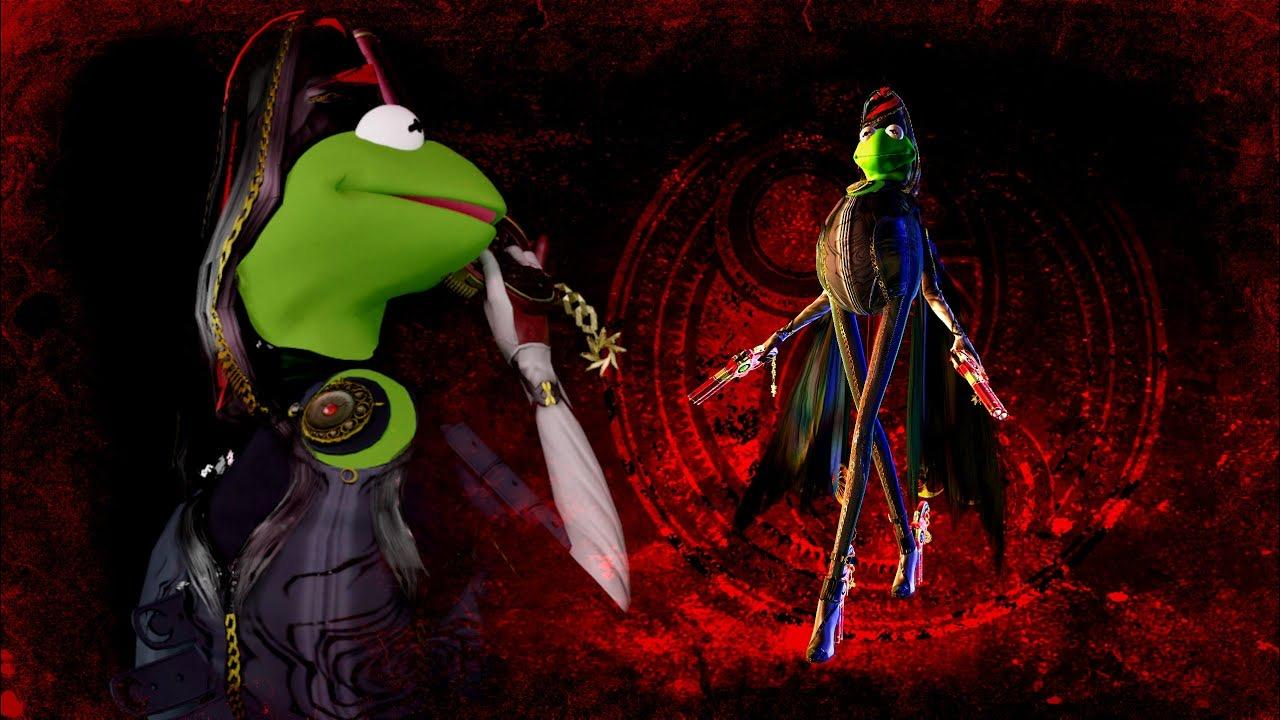
Humanity is beautiful.
And that includes you! Make sure to drink water/eat/take your meds if you have them and haven’t yet and have a good day 🙂


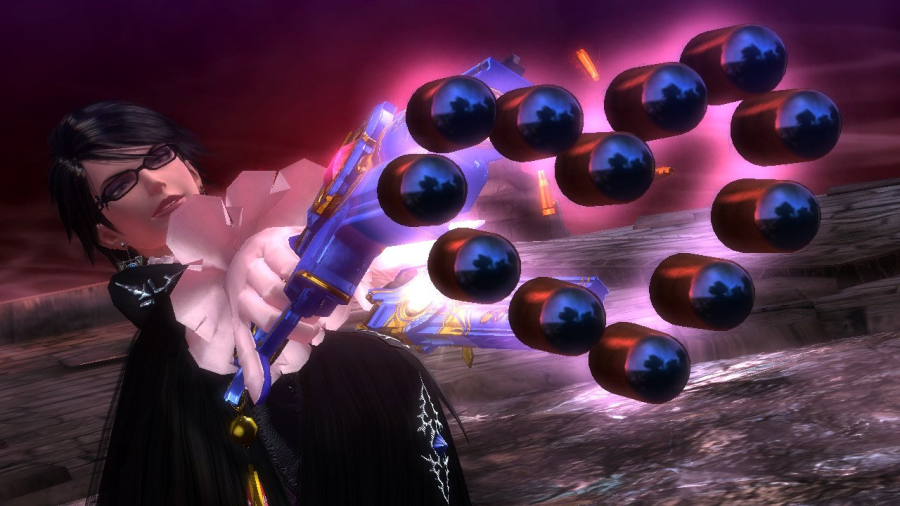
Silas O. • Jan 5, 2024 at 10:19 AM
That sega christmas art from 2009 still doesn’t seem real or official.